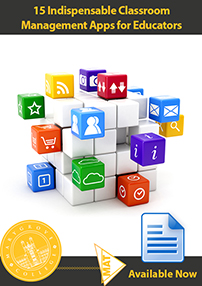When our students successfully solve a problem or answer a difficult question on the first shot, it’s tempting to offer them praise and move on. Positive reinforcement is an important part of our job, but according to Doug Lemov, author of Teach Like a Champion, correct answers still leave ample room for teachable moments. One way Lemov challenges students to move beyond the right answer is by asking them to Stretch It.
 Here’s how Stretch It works. When a student answers a question correctly, the teacher offers a reward in the form of a different—or tougher—question to ensure that the student is able to get similar results again and again.
Here’s how Stretch It works. When a student answers a question correctly, the teacher offers a reward in the form of a different—or tougher—question to ensure that the student is able to get similar results again and again.
Why do this?
First, asking students to Stretch It challenges them to “push ahead, apply their knowledge in new settings and think on their feet.” Second, it sends the message that the reward for achievement is more knowledge, something far more substantive than praise. Third, it gives teachers a real sense for whether or not a student has completely mastered a concept.
Here are four ways teachers can put Lemov’s Stretch It concept into play.
Moving Beyond the Right Answer: 4 Critical Thinking Strategies
Ask how or why
One of the best ways to assess our students’ mastery of a concept is by challenging them to articulate the thinking process—that is, how they came up with the answer. Here’s how you might put this strategy in place.
Teacher: How far is it from Durango to Pueblo?
Student: 600 miles.
Teacher: How’d you get that?
Student: By measuring three inches on the map and adding 200 plus 200 plus 200.
Teacher: How’d you know to use 200 miles for each inch?
Student: I looked at the scale in the map key.
Ask for another way to answer
There are many ways to answer a question. Challenge students to approach problems and concepts from a different angle.
Teacher: How far is it from Durango to Pueblo?
Student: 600 miles.
Teacher: How’d you get that?
Student: By measuring three inches on the map and adding 200 plus 200 plus 200.
Teacher: That’s very good, but I’m curious: Is there an easier way than adding 200 three times?
Student: I could have multiplied 200 times three.
Teacher: What would the answer be then?
Student: 600.
Teacher: Very nice. That’s probably a more efficient way.
Ask for a better word
Students often begin the mastery process by grappling with concepts in simple, and often vague, language. When appropriate, challenge students to substitute their word choices with more specific ones.
Teacher: Why did the main character gasp, Janice?
Student: Because the water was cold when she jumped in.
Teacher: Can you answer with a different word from cold, one that shows us how cold it was?
Student: “Freezing.”
Teacher: That’s a good one—how about using one of our vocabulary words though?
Student: Sophie gasped because the water was frigid.
Teacher: Very nice!
Ask for evidence
The older our students get, the more we challenge them to interrogate their presuppositions and commonplace answers. A good way to get students to move away from oversimplifying complex issues is by asking them to describe evidence that supports their conclusion. When appropriate, stress the process of building and supporting a sound argument.
© 2024 Created by Steve Hargadon.
Powered by
![]()
